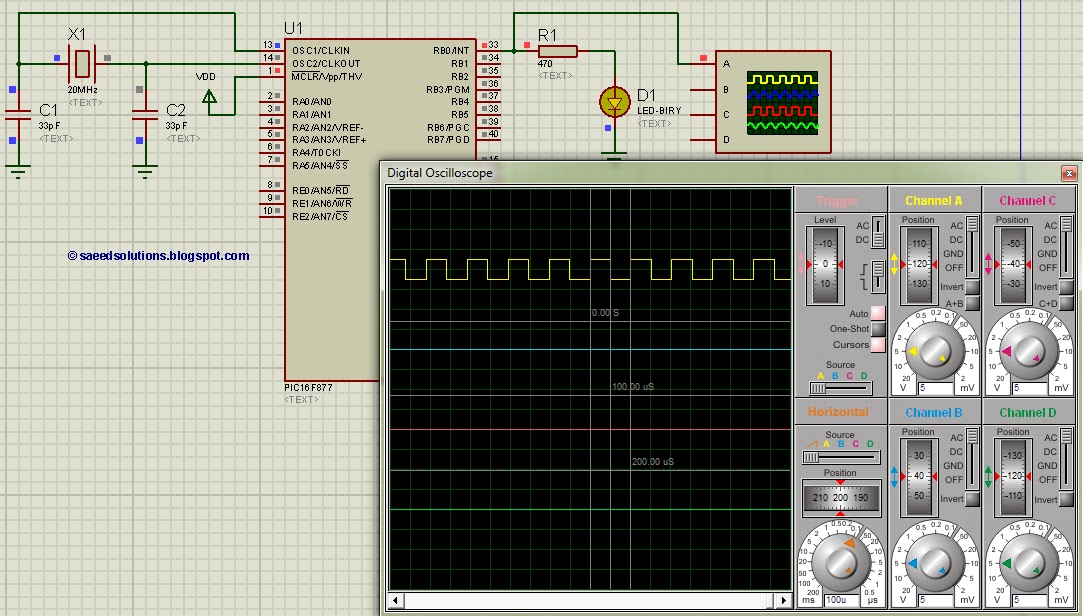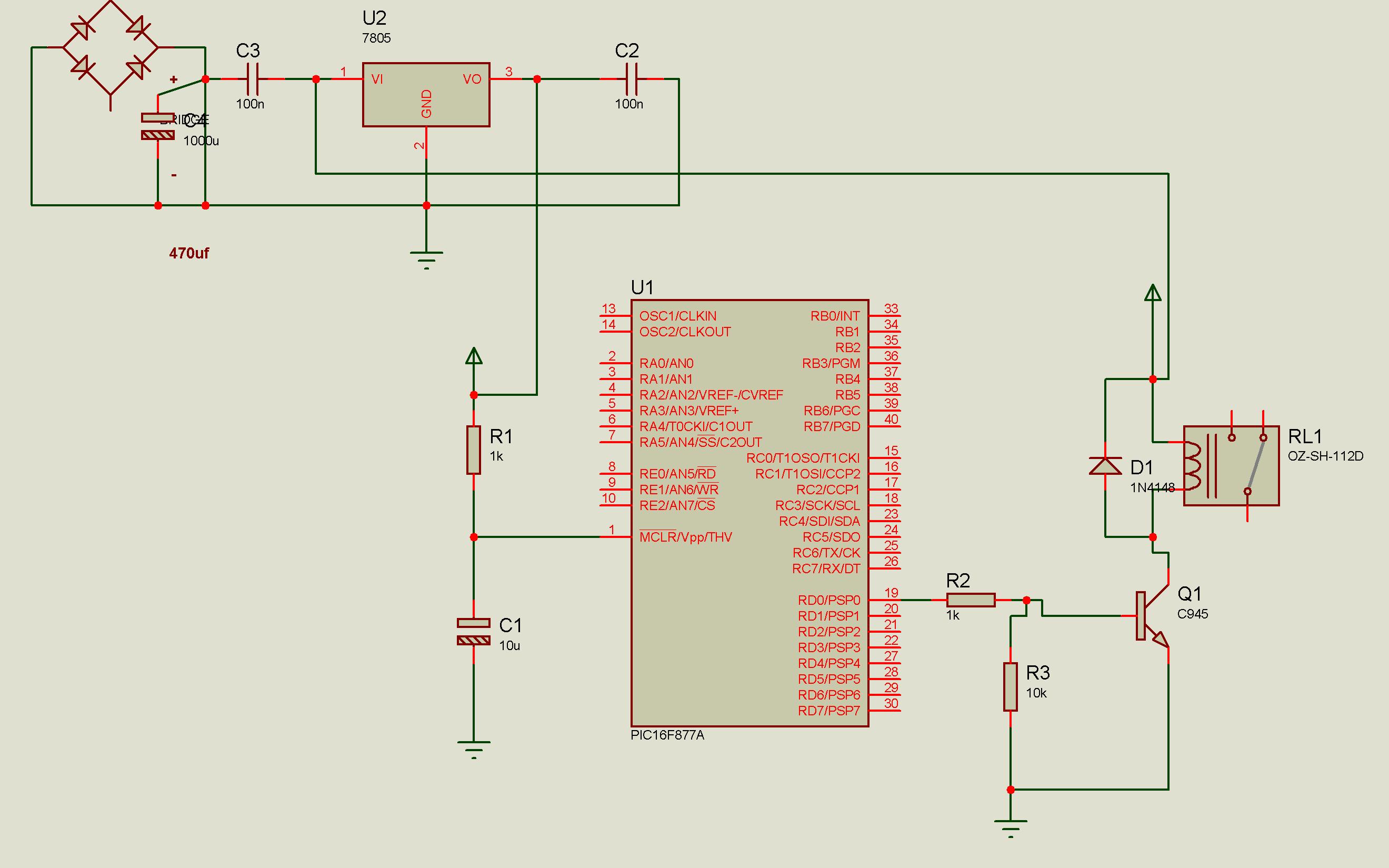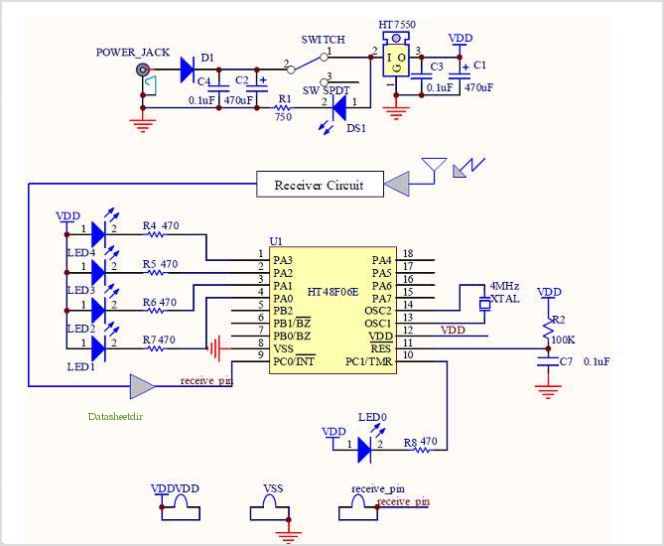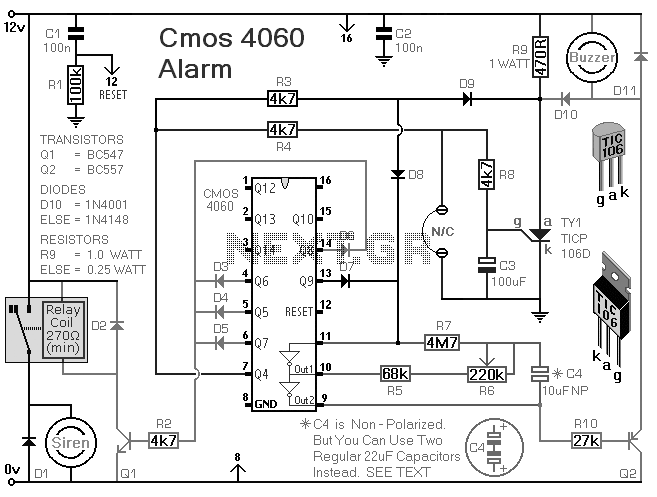
pic16f877 timer0 code and proteus simulation

This tutorial on the PIC16F877 microcontroller addresses the question of how to utilize Timer0 and manage its interrupts. It utilizes the PIC16 simulator for demonstration purposes.
The PIC16F877 microcontroller is a versatile device widely used in embedded systems. Timer0 is an essential peripheral that provides timing and counting capabilities, which can be utilized for various applications such as generating time delays, event counting, and pulse width modulation.
To configure Timer0, the relevant registers must be set appropriately. The T0CON register controls the operation of Timer0, allowing the selection of the timer mode (16-bit or 8-bit), the prescaler settings, and the clock source. The prescaler can be configured to divide the input clock frequency, which effectively extends the timer's counting range.
Interrupt handling is a critical aspect of using Timer0. The Timer0 interrupt flag (T0IF) is set when the timer overflows, which can be monitored to trigger an interrupt service routine (ISR). To enable Timer0 interrupts, the T0IE bit in the PIE1 register must be set, and the global interrupt enable (GIE) bit must also be activated.
In practice, the implementation involves initializing Timer0, enabling the appropriate interrupts, and writing the ISR to handle the overflow condition. The ISR can perform tasks such as toggling an LED, updating a counter, or executing other time-sensitive operations.
Overall, this tutorial serves as a comprehensive guide for users looking to effectively utilize Timer0 in the PIC16F877 microcontroller, providing insights into both configuration and interrupt management.This PIC16F877 microcontroller tutorial answers the question, "" How to use timer0 of PIC16F877 and how to handle its interrupts? "" Using PIC16 simulator (P.. 🔗 External reference
The PIC16F877 microcontroller is a versatile device widely used in embedded systems. Timer0 is an essential peripheral that provides timing and counting capabilities, which can be utilized for various applications such as generating time delays, event counting, and pulse width modulation.
To configure Timer0, the relevant registers must be set appropriately. The T0CON register controls the operation of Timer0, allowing the selection of the timer mode (16-bit or 8-bit), the prescaler settings, and the clock source. The prescaler can be configured to divide the input clock frequency, which effectively extends the timer's counting range.
Interrupt handling is a critical aspect of using Timer0. The Timer0 interrupt flag (T0IF) is set when the timer overflows, which can be monitored to trigger an interrupt service routine (ISR). To enable Timer0 interrupts, the T0IE bit in the PIE1 register must be set, and the global interrupt enable (GIE) bit must also be activated.
In practice, the implementation involves initializing Timer0, enabling the appropriate interrupts, and writing the ISR to handle the overflow condition. The ISR can perform tasks such as toggling an LED, updating a counter, or executing other time-sensitive operations.
Overall, this tutorial serves as a comprehensive guide for users looking to effectively utilize Timer0 in the PIC16F877 microcontroller, providing insights into both configuration and interrupt management.This PIC16F877 microcontroller tutorial answers the question, "" How to use timer0 of PIC16F877 and how to handle its interrupts? "" Using PIC16 simulator (P.. 🔗 External reference





